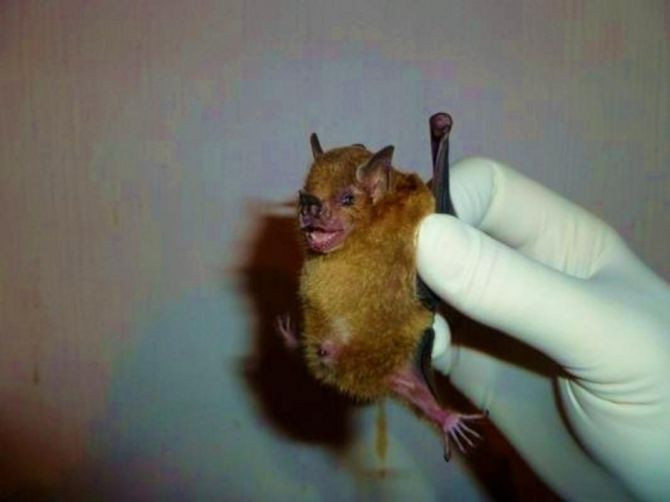Influenza Virus Discovered in Bats, Human Risk Still Unclear

Scientists have discovered for the first time evidence of a never-before-seen variation of the influenza virus in bats.
A study published on Monday in the Proceedings of the National Academy of Sciences found that the virus, scientists have labeled H17, appeared to be a very old subtype that diverged from the known influenza viruses long ago, revealing some clues on way the virus evolves.
The researchers said that attempts to grow the virus in cell cultures were unsuccessful, and they are still unsure if or how contagious the virus is, but because the virus diverged from another known influenza strain long ago it appeared to pose no immediate threat to people.
Experts suspect that the virus infected bats centuries ago, and that the virus mutated within the bat population to produce the new variety. They noted, however, that the newly discovered virus is still similar enough to other subtypes that genetic exchange could be risky to humans.
“We can’t say don’t worry about it, nor can we say it’s not dangerous. We just don’t know yet,” study co-author Ruben Donis, chief of molecular virology and vaccines in the influenza division at the Centers for Disease Control and Prevention (CDC) in Atlanta, Georgia, told Nature.
The flu virus generally affects humans, birds, pigs and has also been documented to affect dogs, horses, seals and whales. Russian virologists had claimed about five years ago that they found flu in bats, but they had not offered evidence.
Donis and his research team are currently testing bats in South America, Africa and Asia to map out the geographical distribution of the flu virus. Researchers say that this is just this is just the first step towards identifying whether bats can spread a pandemic in humans.
“We are far away from speculating on any pandemic potential of this virus, but finding this ancient influenza subtype stresses again that bats are an important source of animal viruses," Ab Osterhaus, head of virology at Erasmus Medical Center in Rotterdam, the Netherlands, who was not involved in the work, told Nature.
In recent years, bats had been linked to the emergence of Ebola virus, severe acute respiratory syndrome (SARS) and nipah virus.
The researcher began collecting molecular probes of 316 to screen and detect presence of rabies in bats in 2009 and 2010, and then expanded the samples to be screened for other viruses, like influenza. The study found that out of the 21 species in eight different locations of bats tested, three little yellow-shouldered bats (Sturnira lilium) had been infected with H17.
Although the yellow-shouldered bats eat fruit and insects and do not bite people, it is possible they could leave the virus on fruit or produce could infect a person if they were to bite on the contaminated fruit. Researchers said that it is possible for some people to be infected in the past, and now that scientists have identified what the virus looks like, they are able to look for it in other bats, other animals and people.
“With more than 1,200 known species, bats are the second-largest mammal group, so it’s not surprising that they carry a large diversity of viruses,” Jon Epstein, a veterinary epidemiologist at EcoHealth Alliance in New York told Nature. “Finding older lineages of influenza in bats doesn’t necessarily increase the risk of influenza emerging into human populations, but it does help us understand the diversity of flu viruses in nature and how genes may be swapped between strains and species.”
"Most people are fairly convinced we had already discovered flu in all the possible animals”, Donis told AP, but “the real questions are ‘where else could we find influenza?’ and 'have we looked carefully everywhere?'” he said.



























